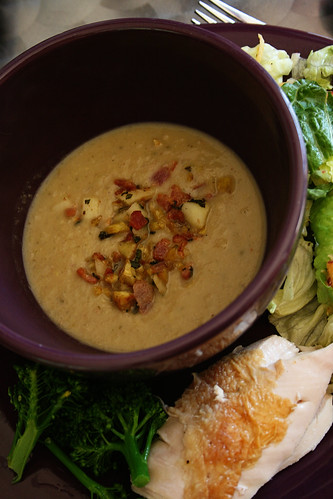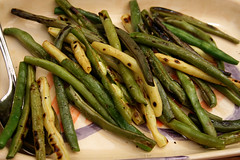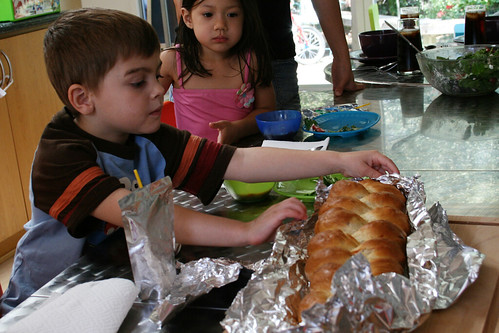
Add a little something extra — a touch of vinegar, a stalk of lemongrass and some time, if you have it, or a few drops of hot sauce — and you have a refreshing soup that's a perfect bridge from cold-weather curries to summertime gazpacho.
I threw this together after coming home from a long holiday to a mostly-empty pantry. Spring showers called for soup, but all I had for veggies were some lettuce and a lone sweet potato.
I zapped the potato in the microwave, opened a can of light coconut milk, and pulled a stalk of lemongrass from the garden. (I know, lemongrass is hardly a pantry staple. But if you have some, use it!) Everything went into a pot for half an hour, and I stirred whenever I passed through the kitchen. A splash of vinegar and a squeeze of lemon, and it was ready to go.
The result is a little sweet without being cloying — the vinegar really elevates the taste. Adults and spice-happy kids might like it with a drop or two of Sriracha. This one is definitely going into regular rotation: Even my coconut milk-averse, sweet potato-hating husband liked this and helped himself to a second bowl. (He says it doesn't taste like sweet potato; I say it does, and he just hasn't given sweet potatoes a fair chance.)
Springtime Sweet Potato Soup
To cook a sweet potato quickly, prick it several times with a fork and set it on a plate in the microwave. Cook on high for 8-10 minutes until soft, turning once halfway through. Let cool and peel.
The vinegar and lemon/lemongrass aren't essential, but they elevate this soup from good enough to mighty tasty.
The vinegar and lemon/lemongrass aren't essential, but they elevate this soup from good enough to mighty tasty.
1 medium sweet potato, cooked and mashed
1 cup coconut milk
1 cup water (or broth)
1 to 3 teaspoons cider vinegar or rice wine vinegar
salt and pepper
2 stalks lemongrass, stalk only, peeled and split in half lengthwise, and/or a squeeze of lemon juice
Sriracha (optional)
Stir together mashed sweet potato, coconut milk, and water in a saucepan over medium heat. Add lemongrass stalks, if using. Warm to barely a simmer, stirring occasionally. If using lemongrass, keep on the burner for 20 to 30 minutes, then remove the lemongrass stalks.
Purée soup with an immersion blender (or blend in batches, carefully, in a blender or food processor). Stir in vinegar, a teaspoon at a time, until it has the right amount of zip to suit your taste. (If you're adding lemon juice, this is the time to do it.) Season with salt and pepper. If it's too thick, stir in a little more water, broth, or coconut milk.
Optional: Serve with Sriracha for those who want to add a little more heat.
Purée soup with an immersion blender (or blend in batches, carefully, in a blender or food processor). Stir in vinegar, a teaspoon at a time, until it has the right amount of zip to suit your taste. (If you're adding lemon juice, this is the time to do it.) Season with salt and pepper. If it's too thick, stir in a little more water, broth, or coconut milk.
Optional: Serve with Sriracha for those who want to add a little more heat.

























